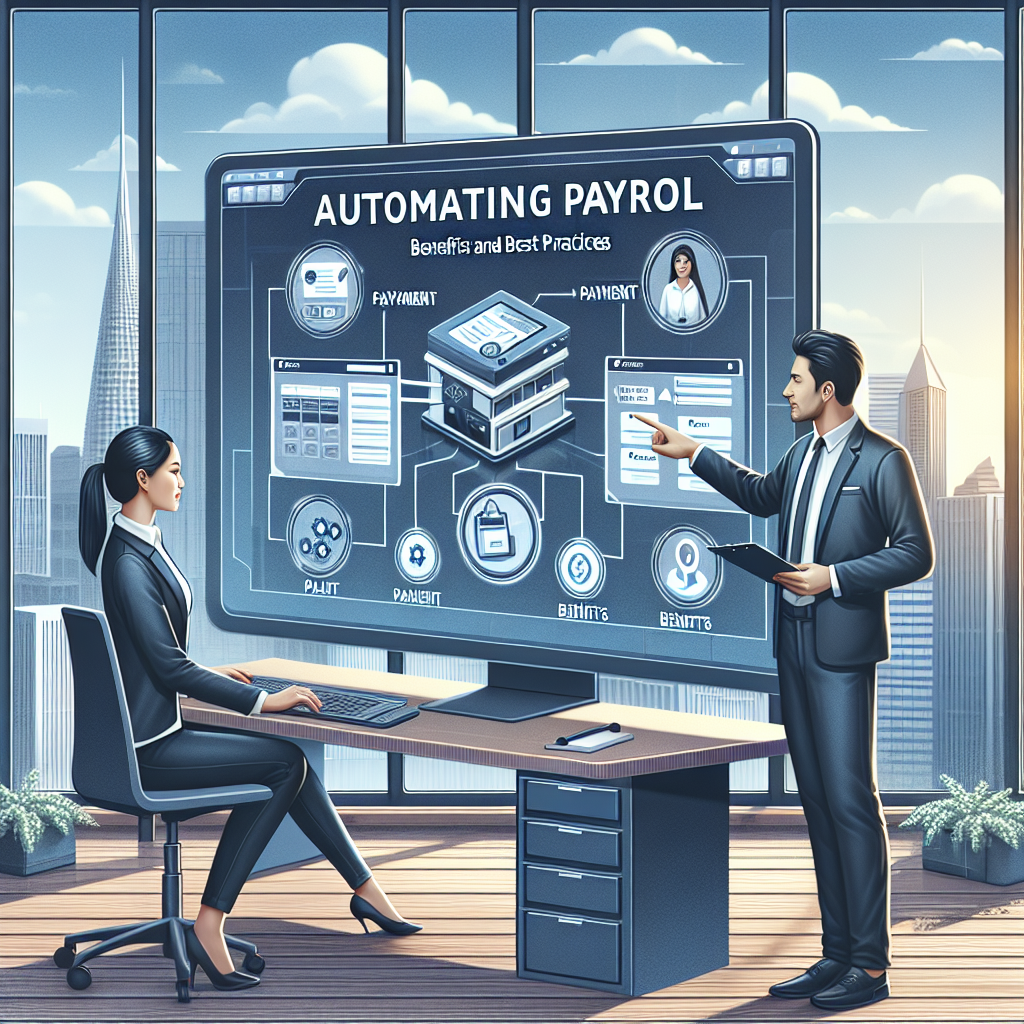In today’s fast-paced business environment, automating payroll systems is an essential step for companies looking to streamline operations, save time, and reduce costs. Traditional manual payroll processes can be time-consuming and prone to errors. By leveraging technology, businesses can enhance accuracy and efficiency while also improving employee satisfaction. In this article, we’ll explore the benefits of automating payroll and share best practices to help you implement this transformative approach effectively.
Understanding Payroll Automation
What is Payroll Automation?
Payroll automation refers to the use of software and technology to manage payroll processes automatically. This includes calculating wages, withholding taxes, and distributing payments with minimal human intervention. By integrating payroll systems with other HR functions, businesses can ensure that payroll is both efficient and compliant with regulatory changes.
Key Benefits of Automating Payroll
1. Time and Cost Efficiency
One of the primary advantages of payroll automation is the significant reduction in time spent on payroll processing. By eliminating manual calculations and paper-based methods, businesses can allocate their resources to more strategic initiatives. This transition not only saves time but also reduces labor costs associated with payroll management.
2. Increased Accuracy
Mistakes in payroll can lead to serious consequences, including financial penalties, employee dissatisfaction, and compliance violations. Automated payroll systems minimize the risk of errors by standardizing calculations and streamlining data entry. As a result, businesses can ensure that employees are paid accurately and on time, fostering trust and morale.
3. Enhanced Compliance and Security
Navigating the complexities of tax regulations and employment laws can be daunting. Payroll automation helps businesses stay compliant with changing regulations by automatically updating tax rates and ensuring accurate reporting. Additionally, modern payroll systems come equipped with robust security features that protect sensitive employee data from unauthorized access and breaches.
4. Improved Employee Experience
An automated payroll system often leads to a better employee experience. With reliable and timely payments, employees feel valued and secure in their financial affairs. Furthermore, many payroll systems offer self-service portals, allowing employees to access their pay stubs, tax documents, and benefits information without needing to contact HR.
Best Practices for Implementing Payroll Automation
1. Choose the Right Software
The first step in automating payroll is selecting the right software that aligns with your business needs. Consider factors such as the size of your company, the complexity of your payroll structure, and any integration requirements with existing HR systems. Popular payroll software options like ADP, Gusto, and Paycor provide varied features tailored for different types of organizations.
2. Conduct Thorough Testing
Before fully implementing the automated payroll system, conduct comprehensive testing. Run a few payroll cycles in parallel with the manual process to identify any discrepancies and ensure that the software performs as expected. This test phase is critical for making adjustments and boosting confidence in the new system.
3. Train Your Team
Investing in training for both HR personnel and employees is vital for a smooth transition. Ensure that your team understands how to use the new payroll system effectively. Offer resources such as tutorials, manuals, and FAQs, and encourage open communication to address any concerns.
4. Regularly Update and Maintain the System
To keep your payroll system efficient and compliant, ensure it is regularly updated. Software vendors frequently release updates that improve functionality and security. Schedule maintenance checks to prevent any disruptions in service and verify that your system accurately reflects current tax rates and employment laws.
5. Foster Open Communication
Encouraging employees to provide feedback about the payroll process can help identify areas for improvement. Establishing a culture of open communication not only builds trust but also enhances employee satisfaction as they feel their needs and concerns are being addressed.
Conclusion: Embrace the Future of Payroll
Automating payroll is a strategic move that can propel your organization toward greater efficiency, accuracy, and employee satisfaction. By understanding the benefits and adhering to the best practices for implementation, businesses can not only simplify their payroll processes but also foster a more engaged and motivated workforce. Embrace technology today, and ensure your payroll processes run like a well-oiled machine, allowing you to focus on what truly matters: growing your business and supporting your employees.


